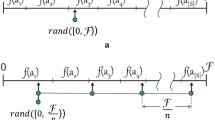Abstract
As more organizations grasp the tremendous benefits of Mobile Ad-hoc Networks (MANETs) in tactical situations such as disaster recovery or battlefields, research has begun to focus on ways to secure such environments. Unfortunately, the very factors that make MANETs effective (fluidity, resilience, and decentralization) pose tremendous challenges for those tasked with securing such environments. Our prior work in the field led to the design of BITSI – the Biologically-Inspired Tactical Security Infrastructure. BITSI implements a simple artificial immune system based upon Danger Theory. This approach moves beyond self/non-self recognition and instead focuses on systemic damage in the form of deviation from mission parameters. In this paper, we briefly review our prior work on BITSI and our simulation environment, and then present the application of collaborative filtering techniques. Our results are encouraging, and show that collaborative filtering significantly improves classification error rate and response within the MANET environment. Finally, we explore the implications of the results for further work in the field, and describe our plans for new research.
Similar content being viewed by others
References
Aickelin, U., Bentley, P., Cayzer, S., Kim, J., McLeod, J.: Danger theory: the link between AIS and IDS? In: Timmis, J. Bentley, P. Hart, E. (eds.) 2nd International Conference in Artificial Immune Systems (ICARIS 2003), pp. 147–155. Springer, Berlin (2003)
Buchegger, S., Le Boudec, J.Y.: The Effect of rumor spreading in reputation systems for mobile ad-hoc networks. In: WiOpt ‘03: Modeling and Optimization in Mobile, Ad Hoc and Wireless Networks, Sophia-Antipolis, France (2003)
Carvalho, M., Ford, R.A., Allen, W.H., Marin, G.: Securing MANETs with BITSI: danger theory and mission continuity, Accepted to SPIE 2008, Orlando (2008)
Clulow, J., Moore, T.: Suicide for the common good: a new strategy for credential revocation in self-organizing systems, In: SIGOPS Oper. Syst. Rev. 40(3),18-21,ISSN 0163–5980 (2006)
Corson, S., Macker, J.: Mobile Ad hoc networking (MANET): routing protocol performance issues and evaluation considerations, IETF RFC2501 (1999)
Forrest, S.A., Hofmeyr, S.A., Somayaji, A., Longstaff, T.A.: A sense of self for unix processes. In: Proceedings of the 1996 IEEE Symposium on Security and Privacy, pp. 120–128. IEEE Computer Society Press, Los Alamitos. ISBN 0-8186-7417-2 (1996)
Huynh, T.D., Jennings, N.R., Shadbolt, N.R.: An integrated trust and reputation model for open multi-agent systems. J. Auton. Agent. and Multi-Agent Syst. 13 (2). pp. 119-154. ISSN 1387-2532 (2006)
Kephart, J.O., Sorkin, G., Swimmer, M., White, S.R.: Blueprint for a computer immune system. In: Proceedings of the International Virus Bulletin Conference, Virus Bulletin PLC, San Francisco (1997)
Liu, J., Issarny, V.: Enhanced reputation mechanism for mobile ad hoc networks. Lecture Notes in Computer Science, vol. 2995/2004, pp. 48-62. Springer, Berlin, Book Trust Management, doi: 10.1007/696545, ISBN 978-3-540-21312-3, ISSN 0302-9743 (2004)
Matzinger P. (1994) Tolerance, danger and the extended family. Annu. Rev. Immunol. 12: 991–1045
Matzinger, P.: Essay 1: the danger model in its historical context. Scand. J. Immunol. 54(1/2):4–9 (2001)
Repantis, T., Kalogeraki, V.: Decentralized trust management for ad-hoc peer-to-peer networks. In: MPAC ’06: Proceedings of the 4th International Workshop on Middleware for Pervasive and Ad-Hoc Computing (MPAC 2006), p. 6. ACM Press, Melbourne (2006)
Sarafijanovic, S., Le Boudec, J.: An artificial immune system approach with secondary response for misbehavior detection in mobile ad hoc networks. In: Neural Networks, IEEE Transactions on, vol. 16, no 5, pp. 1076–1087, ISSN 1045–9227 (2005)
Sterne, D., Balasubramanyam, P., Carman, D., Wilson, B., Talpade, R., Ko, C., Balapari, R., Tseng, C.-Y., Bowen, T., Levitt, K., Rowe, J.: (2005) A general cooperative intrusion detection architecture for MANETs. In: Proceedings of the Third IEEE International Workshop on Information Assurance (IWIA’05), pp. 57–70, IEEE Computer Society, Washington
Sutton R., Barto A. (1998) Reinforcement learning: an introduction. MIT Press, Cambridge. ISBN-13:978-0-262-19398-6
Zouridaki, C., Mark, B.L., Hejmo, M., Thomas, R.K.: (2006) Robust cooperative trust establishment for MANETs. In: SASN ’06: Proceedings of the Fourth ACM Workshop on Security of Ad Hoc and Sensor Networks, pp. 23-34, ACM Press, Alexandria
Author information
Authors and Affiliations
Corresponding author
Rights and permissions
About this article
Cite this article
Hoffman, K., Ondi, A., Ford, R. et al. Danger theory and collaborative filtering in MANETs. J Comput Virol 5, 345–355 (2009). https://doi.org/10.1007/s11416-008-0098-9
Received:
Revised:
Accepted:
Published:
Issue Date:
DOI: https://doi.org/10.1007/s11416-008-0098-9




